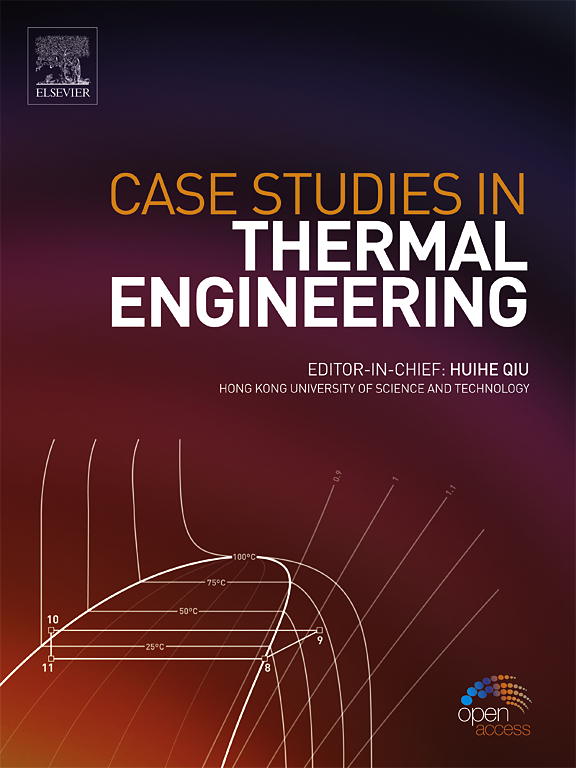Optimization of Convective Drying Conditions for Pomegranate Slices Based on Bioactive Compound Retention Using Response Surface Methodology
IF 6.4
2区 工程技术
Q1 THERMODYNAMICS
引用次数: 0
Abstract
This study investigates the effects of drying temperature (40–60 °C), drying time (11–15 h), and air velocity (1.5–2.5 m/s) on the moisture ratio (响应面法优化石榴片生物活性成分保留对流干燥条件
研究了热风干燥温度(40 ~ 60℃)、干燥时间(11 ~ 15 h)和风速(1.5 ~ 2.5 m/s)对石榴片水分比(MR)、有效水分扩散率(Deff)、总酚含量(TPC)和自由基清除活性(RSA)的影响。采用响应面法对工艺进行建模和优化。干燥温度显著影响MR (p <;0.0001),其次是时间(p <;0.0001)和空气流速(p <;0.05)。热损范围为1.21×10-10 ~ 1.79×10-10 m2/s,主要受温度影响。TPC (630.12 ~ 745.89 mg GAE/100 g dw)和RSA(33.4 ~ 41.2%)受温度和时间影响显著。观察到关键的相互作用,特别是温度和时间之间的相互作用(MR的p = 0.0043;TPC的p = 0.0001)。最佳条件为60°C, 13 h, 1.5 m/s, MR为0.14,Deff为1.79×10-10 m2/s, TPC为745.89 mg GAE/100 g dw, RSA为41.2%,理想评分为0.873。这些结果为改进干燥工艺以保持质量和生物活性提供了基础,在食品和营养保健工业中具有潜在的应用前景。
本文章由计算机程序翻译,如有差异,请以英文原文为准。
求助全文
约1分钟内获得全文
求助全文
来源期刊

Case Studies in Thermal Engineering
Chemical Engineering-Fluid Flow and Transfer Processes
CiteScore
8.60
自引率
11.80%
发文量
812
审稿时长
76 days
期刊介绍:
Case Studies in Thermal Engineering provides a forum for the rapid publication of short, structured Case Studies in Thermal Engineering and related Short Communications. It provides an essential compendium of case studies for researchers and practitioners in the field of thermal engineering and others who are interested in aspects of thermal engineering cases that could affect other engineering processes. The journal not only publishes new and novel case studies, but also provides a forum for the publication of high quality descriptions of classic thermal engineering problems. The scope of the journal includes case studies of thermal engineering problems in components, devices and systems using existing experimental and numerical techniques in the areas of mechanical, aerospace, chemical, medical, thermal management for electronics, heat exchangers, regeneration, solar thermal energy, thermal storage, building energy conservation, and power generation. Case studies of thermal problems in other areas will also be considered.
 求助内容:
求助内容: 应助结果提醒方式:
应助结果提醒方式:


